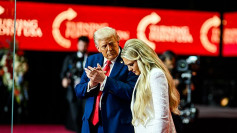The number of Americans filing new applications for unemployment benefits dropped more than expected last week, highlighting the resilience of the US labor market despite ongoing economic headwinds. The Labor Department reported on Thursday that initial claims for state unemployment benefits fell by 17,000 to a seasonally adjusted 222,000 for the week ended July 6, the lowest level since late May. Economists surveyed by Reuters had forecast 236,000 claims for the latest week.
This decline in jobless claims comes amid a typically volatile period as automobile manufacturers idle plants for retooling, which can complicate efforts to get a clear read on the labor market. The claims data included the Independence Day holiday, a time when auto makers traditionally shut down assembly plants to retool for new models. The timing of these shutdowns can vary among manufacturers, potentially distorting the government's seasonal adjustment models.
Despite this potential noise in the data, signs are emerging that the labor market might be losing some steam as hefty interest rate increases from the Federal Reserve in 2022 and 2023 begin to cool economic activity. Federal Reserve Chair Jerome Powell flagged these risks to the labor market earlier this week, telling lawmakers that "we have seen considerable softening." This statement, coupled with easing inflation pressures, has led financial markets to believe that the Fed might start cutting rates as early as September.
The Fed has maintained its benchmark overnight interest rate in the 5.25%-5.50% range since last July, having increased its policy rate by 525 basis points since 2022 to tame inflation. The recent jobless claims report also showed a slight decrease in the number of people receiving benefits after an initial week of aid, a proxy for hiring, which slipped by 4,000 to a seasonally adjusted 1.852 million during the week ending June 29.
However, the elevated level of continuing claims suggests that it is becoming more challenging for some people receiving unemployment benefits to land jobs. This increase has been partly attributed to a policy change in Minnesota that allows non-teaching educational staff to file for unemployment benefits during the summer break.
The latest report also indicated that the labor market remains relatively robust. The four-week average of claims, which helps smooth out some of the week-to-week volatility, fell by 5,250 to 233,500. This consistent decline indicates that the labor market is still healthy, despite the Federal Reserve's aggressive rate hikes aimed at cooling the economy.
In a broader context, the Fed's interest rate hikes, which began in March 2022, were intended to curb the four-decade high inflation that shook the economy following its rebound from the COVID-19 recession. The goal was to cool off a red-hot labor market and slow wage growth, which can fuel inflation. Despite these measures, many economists had expected that such rapid rate hikes would trigger a recession. However, strong consumer demand and a resilient labor market have so far prevented this from happening.
The unemployment rate ticked up to 4.1% in June, a 2.5-year high, despite the addition of 206,000 jobs by US employers. Job postings in May rose slightly to 8.1 million, although April's figure was revised down to 7.9 million, marking the first reading below 8 million since February 2021. This data suggests some softness creeping into the labor market, even as it remains historically healthy.
Investors are now betting that there is nearly a 70% chance for a rate cut at the Fed's September meeting. While the next policy meeting is at the end of this month, few experts expect a rate cut then. Skyler Weinand, chief investment officer at Regan Capital, noted, "With another good CPI print under their belt, the window is open for the Federal Reserve to cut interest rates as early as September, and potentially again in December, assuming the inflation data continues to cooperate."






